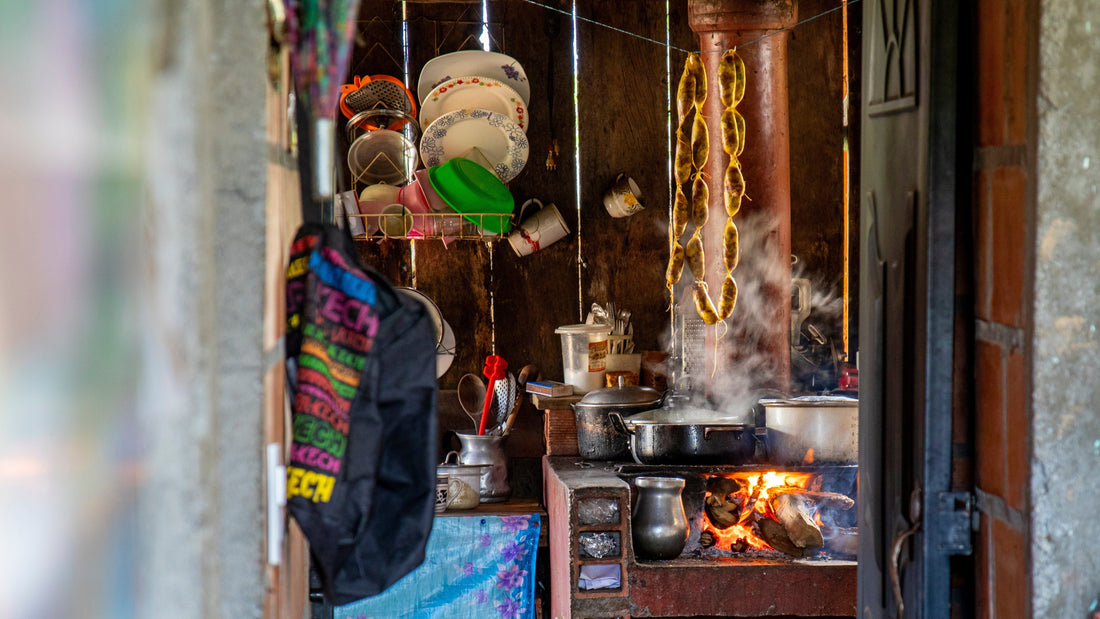
How Much Do Our Coffee Farmers Really Earn?
Share
The Financial Reality of Coffee Farming
The journey of a coffee bean from farm to cup is often seen as a seamless process, but behind the scenes, coffee farmers face a harsh economic reality. While consumers in Europe enjoy premium-priced coffee, the income received by coffee farmers in Colombia can be surprisingly low. This disparity raises critical questions about how much coffee farmers actually earn and the factors that impact their wages. The reality is that many farmers struggle with fluctuating market prices, high production costs, and regional economic challenges. In this article, we’ll delve into these financial complexities, explore the role of fair trade and direct trade models, and highlight the importance of transparency and ethical sourcing in improving coffee farmers' incomes. By understanding these aspects, we can better appreciate the true cost of our coffee and the need for more equitable practices in the industry.
The Traditional Coffee Supply Chain
In the conventional coffee supply chain, the journey from bean to cup is marked by numerous intermediaries, each taking a cut of the final price. This fragmented system often means that by the time coffee reaches consumers, only a small fraction of the retail price reaches the farmers who grew it.
Coffee farmers in Colombia face particularly tough economic conditions. According to a International Coffee Organization | (icocoffee.org), the production costs for Colombian coffee are relatively high, averaging 8.3 grams of coffee are used to brew one cup. This equates to roughly €0.023 per cup.
Despite these costs, many Colombian coffee farmers struggle to cover their production expenses and often earn below the poverty line due to volatile market prices. Raw Material emphasizes that these farmers face systemic challenges, including high production costs and fluctuating market prices. Addressing these issues requires innovative approaches, such as vertically integrated models, which help ensure that a larger share of the value is retained by the farmers.
Fair Trade vs. Direct Trade: Income Comparisons
When comparing Fair Trade and Direct Trade models, understanding their impact on coffee farmers’ incomes reveals significant differences. Each approach has its own set of benefits and limitations in improving the financial well-being of farmers.
Fair Trade aims to ensure farmers receive a minimum price for their coffee, promoting social and environmental standards. According to the International Coffee Organization (ICO), the Fair Trade minimum price for green coffee is approximately €2.26 per kilogram. This model helps farmers cover basic production costs but often leaves them vulnerable during market fluctuations.
Direct Trade, on the other hand, involves a closer relationship between roasters and farmers, allowing for higher premiums. Prices under Direct Trade can reach up to €4.09 per kilogram. This model typically offers farmers a better income by cutting out intermediaries and fostering long-term partnerships.
Comparative Insights:
- Fair Trade: €2.26 per kilogram, with added benefits of social and environmental standards.
- Direct Trade: Up to €4.09 per kilogram, providing higher premiums and improved direct relationships with buyers.
Both models aim to address the financial challenges faced by coffee farmers, but Direct Trade often provides a more substantial increase in income by directly linking farmers with consumers.
The Impact of Fair Wages on Coffee Farming Communities
Fair wages in coffee farming do more than just improve individual incomes; they transform entire communities. When coffee farmers receive a fair price for their product, the positive ripple effects extend throughout their villages and families.
Economic Upliftment: Fair wages enable farmers to invest in better farming practices, leading to increased productivity and quality. This can elevate the local economy as farmers have more purchasing power, which can boost local businesses and create jobs.
Education and Health: With improved incomes, families can afford better education for their children and access to healthcare services. This helps break the cycle of poverty and promotes long-term community development.
Community Resilience: Fair wages foster stability and resilience in farming communities. By securing a more reliable income, farmers are less likely to migrate to urban areas in search of better opportunities, thus strengthening community ties and preserving cultural heritage.
Environmental Benefits: When farmers earn a fair wage, they are more likely to invest in sustainable farming practices. This reduces environmental degradation and promotes long-term ecological health, benefiting both the community and the environment.
In essence, fair wages create a foundation for thriving, self-sufficient communities that can grow sustainably and with dignity.

Conclusion
Addressing the income disparity in coffee farming requires a multifaceted approach. As we've explored, fair trade and direct trade models offer different pathways to improving farmers' earnings, yet both are essential in their ways. Fair wages not only uplift individual farmers but also foster thriving, resilient communities by enhancing local economies, education, and environmental practices.
As highlighted by Raw Material, "The more we shorten the supply chain, the more value is retained by those who truly deserve it—the farmers." This underscores the importance of direct and transparent relationships between producers and consumers. By supporting initiatives that ensure fair wages and better income distribution, we contribute to a more equitable coffee industry.
Our mission at The Red Mountain Group aligns with this vision, working to create a sustainable and fair coffee supply chain that benefits everyone involved.
